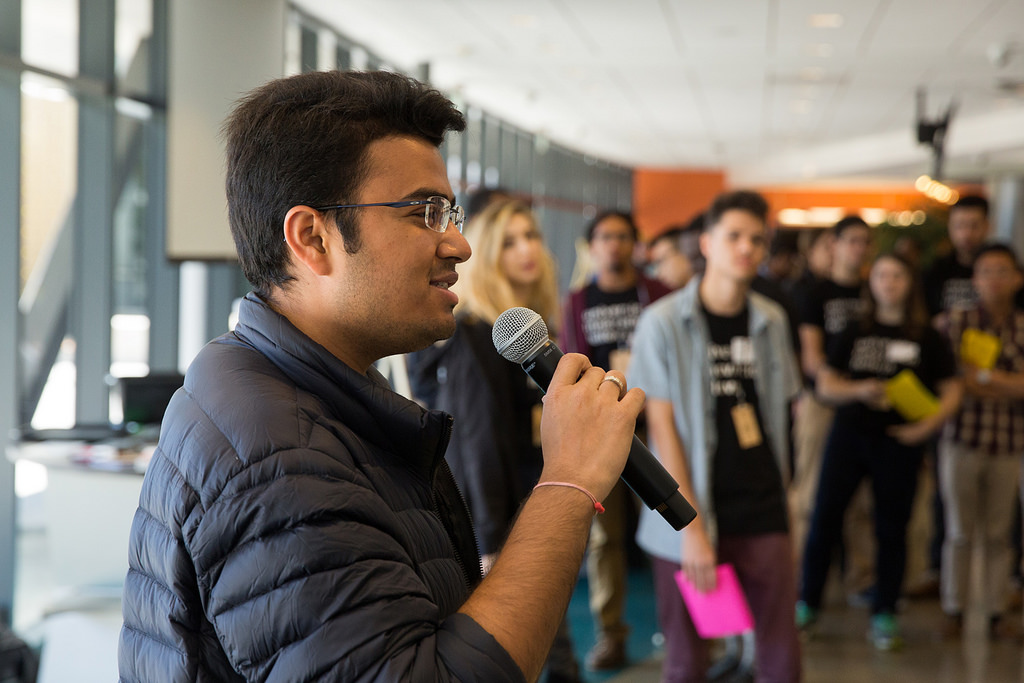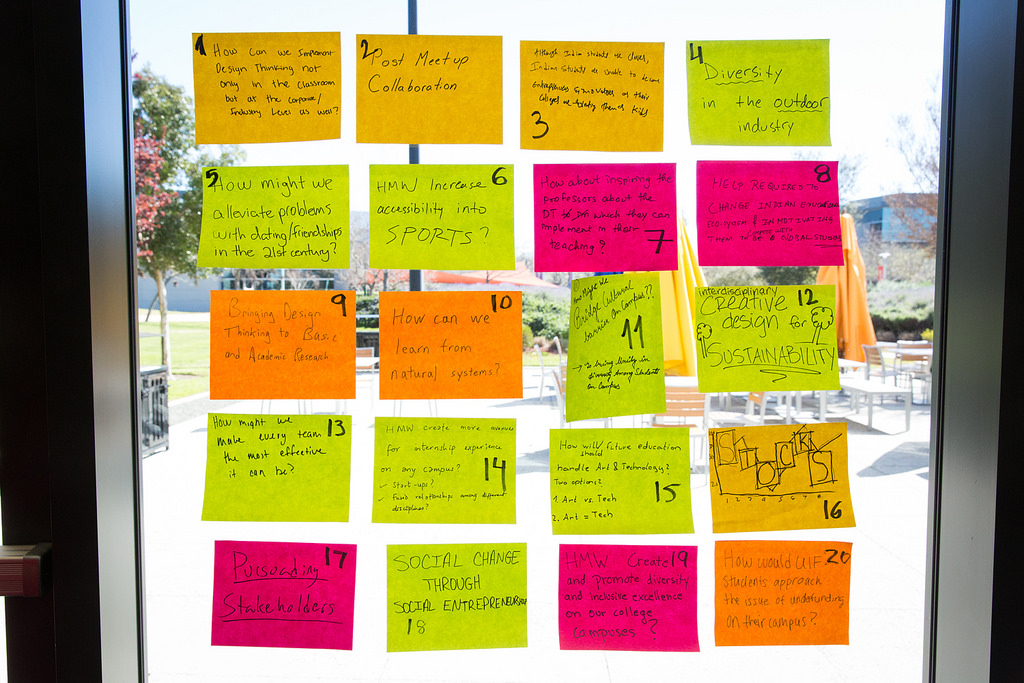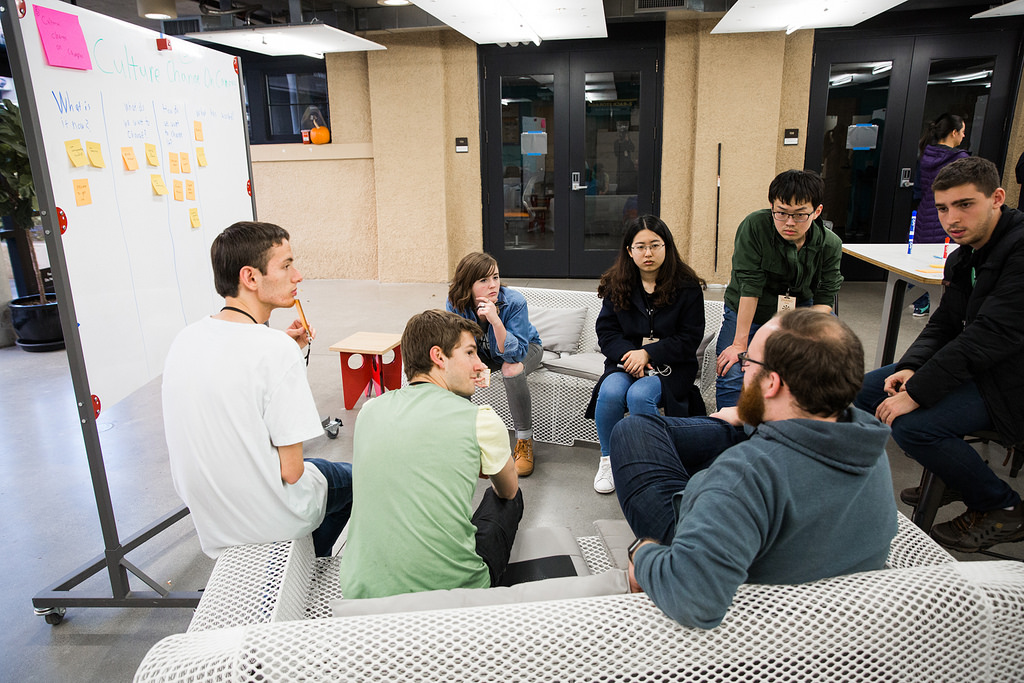Resource:How to organize an unconference
You probably have been to a traditional conference. There are panels, breakout sessions, keynote speakers, and coffee breaks. In most cases, the panels and speaker sessions go in one direction. Whoever is on the stage speaks and the audience listens for most of the time. At the end of the session a few audience members --usually those who are more comfortable speaking up -- get to ask a question or two (which may or may not be relevant or interesting to everyone). While many speakers have interesting things to say, often the most valuable connections are made during the breaks, when you bump into someone and start a conversation... but then you have to rush to the next session.
In contrast, an UNconference makes those organic conversations the whole event. There are no speakers and no pre-set agenda. The attendees --who come because they are interested in the proposed topic -- collectively create the event's agenda and move organically to find conversations where they can learn and add value.
The Unconference is a tradition of UIF Meetups, and in this page you'll find instructions to organize your own.
Contents
What You Need
- A topic. This is what will attract the right participants to come. It can be anything. For instance, you can convene an unconference on "Creating a Sustainable Campus". You need to determine what is a topic that will be relevant to the people you want to engage.
- A space. Ideally the venue has open space for people to gather at the beginning. You can use a space that has a number of breakout rooms so that each topic can be assigned to a room, or use a large open space with easels, whiteboards or paper on walls in place of rooms.
- Facilitator(s). Most of the unconference will be run by attendees, but the role of the facilitator(s) is key in explaining how the unconference works and crowdsourcing the agenda from participants (more on this below).
The Structure of an Unconference
An unconference has three parts:
- Kick-off: participants arrive to the space, the facilitator(s) explains the rules of interaction (more below), and the unconference agenda is collaboratively built.
- Conversations: this is the main part of the unconference, and participants gather according to their topics of interest from the proposed agenda. The conversations can take the form of sharing information, synthesizing information (ie, making new connections between data), brainstorming ideas, etc.
- Wrap-up: participants representing the different conversations share highlights with the whole group.
See here photos of the UIF unconferences from March 2017 and 2018:
I. A Fellow pitching a topic during kick-off.
II. The Unconference Agenda (aka The Wall)
III. A group during the conversations phase.
The Rules of Interaction and Movement
The whole point of the unconference is that you interact with the people and topics to whom/which you can add value and learn from. And this can change throughout the unconference, so a conversation you were initially drawn to may turn into one that no longer interest you. If you were participating in a traditional conference, you would be polite and stay --maybe zoning out or checking your email or social media on your phone as the speaker/panel presents. In an unconference, you would do exactly the opposite, using the Rule of the Two Feet, which states that "if at any point you are no longer learning or adding value to a conversation, you take your two feet and go somewhere else." Importantly, you do NOT apologize to the group and come up with an excuse to leave. You just leave.
When you leave a conversation, you refer back to the agenda that was built during the kickoff (you can encourage participants to take a photo of the agenda with their cell phone) and go to a new location. As you move in search of a new conversation, you can operate in two ways:
- as a butterfly, walking about and unobtrusively listening to different conversations; or,
- as a bumblebee, who jumps into a conversation right away and points at connections and data gathered in other conversations (in other words, cross-pollinating conversations.)
Note that even the person who initially proposed the topic that got the conversation started can two feet away.
As a result of this organic way of moving in and out of conversations, some of the groups might dwindle down to 2 people, dissipate completely, or break out into different groups/threads, while others might grow in numbers.
The Role of the Facilitator(s)
The facilitator(s) main role is to:
- Welcome attendees, make them feel at home and explain the high level idea of the unconference (you may refer to the text in the intro here to do so, and contrast a traditional conference and an unconference;)
- explain the rules of interaction/movement for everyone to be on the same page. This is best done by doing a demo (from which you may need the assistance of a couple of volunteers). You can demonstrate first how NOT to apply the Rule of The Two Feet (essentially interrupting the conversation and apologizing before leaving), and then how to do it (just leaving;)
- help create the agenda (aka "The Wall"). Provide large post-it notes (or sheets of paper), and markers; and invite anyone who wants to propose a topic to headline it on a post-it, and form a line. Once everyone is ready, each person in line will read out their topic to the whole group, and hand the post it to the facilitator(s), who will assign it to a room (or easel/whiteboard). This will be done by placing the post-it on a pre-arranged grid on a wall or board (*). The facilitator(s) may combine topics that are similar (with the express agreement of the proponents). This also helps if there are more proposed topics than spaces (in any case it's always good to have a couple additional spaces or boards/easels at hand.) Once the agenda has been created, the facilitator will announce the beginning of the unconference (and they can participate in whichever conversation they are interested in.) (**)
- At the end of the unconference time (note that there could be one or several time blocks), the facilitator(s) will moderate the shareout from the groups that are still standing and want to share.
(*) We have also used an editable Prezi to build the Wall, projecting it for the group. You can make a copy of our template here: http://prezi.com/fa_x1pha9-q-/?utm_campaign=share&utm_medium=copy
(**) IMPORTANT: those who propose a topic are not the presenters, nor the owners of the conversation, just the conveners. As such, a person can propose a topic in which they have no expertise, but are interested in interacting with others who might know about it.
Resources
1. On the origins of the Unconference:
- https://en.wikipedia.org/wiki/Open_Space_Technology
- https://www.linkedin.com/pulse/true-inventor-unconference-tim-o-reilly/
2. Videos that may give you a sense of how an unconference runs:
- https://youtu.be/8HM5Q3ZkKSg
- [1] (note: this is a good overview of an unconference, but some of the spaces used for the conversations foster more of the traditional presenter/audience dynamic, so make sure to be mindful to avoid that and ensure that everyone feels they are equal participants.)


